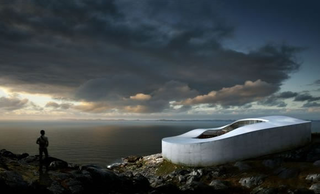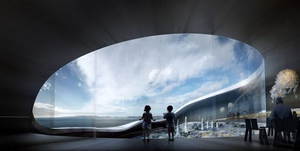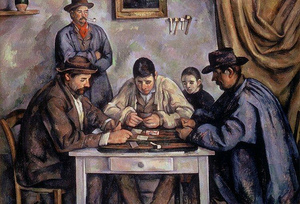Very soon, you can see at a museum what I have been lucky enough to see in a home.
Golden: Dutch and Flemish Masterworks from the Rose-Marie and Eijk van Otterloo Collection opens next Saturday, Feb. 26, at the Peabody Essex Museum in Salem, Mass. It will include about 70 paintings, plus several pieces of 17th century Dutch furniture and decorative art.
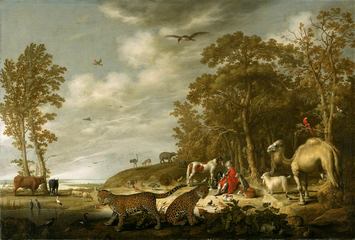 Real Clear Arts readers with a long memory will recall that I interviewed the van Otterloos and wrote a long article about their collection and their collecting for The Art Newspaper, which was published in September, 2009 (item here, article here).
Real Clear Arts readers with a long memory will recall that I interviewed the van Otterloos and wrote a long article about their collection and their collecting for The Art Newspaper, which was published in September, 2009 (item here, article here).
But because of Golden, the Wall Street Journal asked me to write a short “Backstory” piece about the van Otterloos, which is published in today’s paper.
I recently talked with the couple again, but much of our conversation did not make it into that very short WSJ piece. So… here it is:Â
This time I discovered more about their background: Mr. van Otterloo, born in Amsterdam, had come to the U.S. in 1961 to attend Harvard Business School, then spent a little time in Paris, and returned to the U.S. when he could not find an investment banking position in the Netherlands. Later, he co-founded the investment firm of Grantham, Mayo, Van Otterloo & Co.
Mrs. van Otterloo, born in a Belgian hamlet near Maastricht, came to the U.S. learn English in 1967 — she answered an ad for a nanny and spent 10 months doing that in Washington, D.C. before joining Merrill Lynch. And lucky we are, because odds are that the van Otterloos will bestow their collection on some lucky institution here, not in Europe.
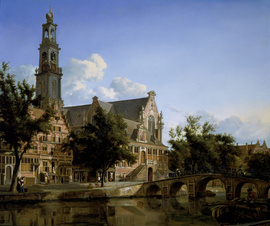 Also, it won’t surprise anyone to find out that the couple is still buying. At Sotheby’s last month, they purchased A Cavalier at His Toilet, by Adriaen Pietersz van de Venne, at Sotheby’s for $338,500 — it’s going right into the exhibit.
Also, it won’t surprise anyone to find out that the couple is still buying. At Sotheby’s last month, they purchased A Cavalier at His Toilet, by Adriaen Pietersz van de Venne, at Sotheby’s for $338,500 — it’s going right into the exhibit.
But they won’t be selling. Mr. van Otterloo still has lingering regret about selling 18 paintings several years ago to raise money to buy their marvelous Rembrandt. And, as Old Master dealer Otto Naumann told me the other day, “This collection can’t be culled again — it is so carefully integrated. They have put something together that fits as a group perfectly.”Â
To have accomplished that, the van Otterloos said they needed to exercise discipline, and for that they seem to work as a team. “Once you start collecting,” Mr. van Otterloo said, “you start looking at everything, and there are many beautiful things that are outside your focus.” His wife helps him with that: “It’s really hard to keep Eijk focused — he likes everything.” Â
Part of the van Otterloo collection — 44 paintings – was shown at the Mauritshuis in The Hague, from last November through January: the smaller works that fit well in those galleries. Not, for example, Aelbert Cuyp’s Orpheus Charming the Animals, shown above left, but like the Heda still life below.
 Â
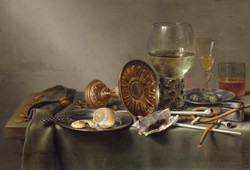 Mrs. van Otterloo said, “Every critic was fantastic and the Dutch public went wild” for the show. “There was not one negative comment,” she added. They received many letters and emails, some of thanks, some with stories. “They were heartwarming — they made me cry,” she said. One, for example, came from a woman who said she and her husband needed something to uplift them, without specifying their problems. After taking the train to see the exhibition, she wrote that it was “just what” their “souls needed.”
Mrs. van Otterloo said, “Every critic was fantastic and the Dutch public went wild” for the show. “There was not one negative comment,” she added. They received many letters and emails, some of thanks, some with stories. “They were heartwarming — they made me cry,” she said. One, for example, came from a woman who said she and her husband needed something to uplift them, without specifying their problems. After taking the train to see the exhibition, she wrote that it was “just what” their “souls needed.”
Â
Mr. van Otterloo said he heard from people he attended high school with, and others that he had not been in contact with for decades.
Â
“We hope the American public will be as enthusiastic as the Dutch,” said Mrs. van Otterloo.
Â
After closing in Salem on June 18, the exhibit will travel to the Fine Arts Museums of San Francisco and then to the Museum of Fine Arts, Houston.
Â
I’m going to give the penultimate word to Peter C. Sutton, director of the BruceMuseum in Greenwich, Ct. and the man who, then a curator at MFA, Boston, sparked the couple’s initial interest in Dutch Old Masters. “It is a staggeringly good collection,” he said.
Â
And the last word here on the exhibition goes to Mrs. van Otterloo: “It’s much more exciting that I ever thought it would be, because we have had such wonderful feedback from everyone.”
Â
Photo Credits: Courtesy of the Peabody Essex Museum
Â

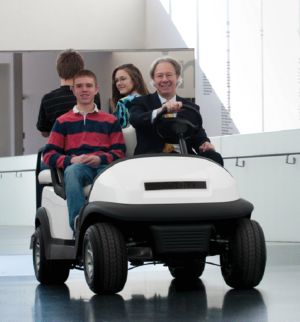 But N-A director Julián Zugazagoitia has already taken one of the carts for a spin (presumably he won’t be doing the driving on a regular basis; also, presumably, the riders won’t be as young as they are in this picture).
But N-A director Julián Zugazagoitia has already taken one of the carts for a spin (presumably he won’t be doing the driving on a regular basis; also, presumably, the riders won’t be as young as they are in this picture).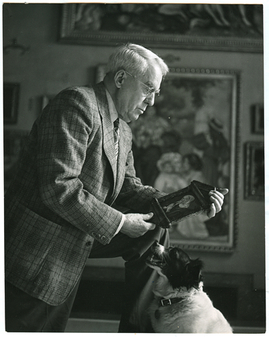 The petition was filed by Attorney Samuel C. Stretton, who appeared at the
The petition was filed by Attorney Samuel C. Stretton, who appeared at the 